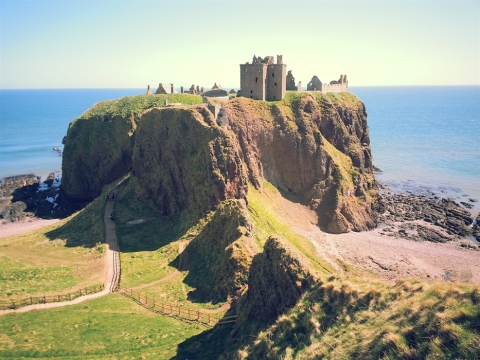Dunnottar Castle encapsulates much of Scotland's history

Dunnottar Castle (Scottish Gaelic: Dùn Fhoithear) stands on a rocky headland in the northeast of Scotland. Surrounded by steep cliffs above the North Sea only a narrow strip of land gives access to the Castle. Although it is not known when the first fortification was built on the headland, evidence of Picts living on the sea stack of Dunnicaer, just north of the castle, has been found by a team of archaeologists from the University of Aberdeen. Carbon dating shows this to be the oldest Pictish fort ever discovered dating to the 3rd century AD. In the 4th century Saint Ninian, an early missionary among the Pictish peoples of what is now Scotland, built a place of worship at Dunnottar. There are also written references in the Annals of Ulster (Irish: Annála Uladh) that record two sieges of "Dún Foither" in 681 and 694.
Certainly over its long history it has been the site of many sieges and battles. Not least in the battles Scotland has had with its ancient foe the English. The history of the castle has been described as encapsulating the history of Scotland in miniature. Amongst the many events it has experienced has been the taking back of the castle from the English in 1297 by Scottish hero William Wallace. Dunnottar Castle also protected the Honours of Scotland (The Scottish Crown Jewels) from Oliver Cromwell who laid siege to the fortress for eight months in 1651-52. The castle finally fell into ruin after Earl Marischal William Keith had his estates confiscated after supporting the the Jacobite rising of 1715. The buildings that can be seen today mostly date to the 15th and 16th centuries and restoration work was undertaken in the 20th century.
Details of the history of Dunnottar Castle can be see on their website.
Image: Dunnottar Castle courtesy of VisitScotland.





